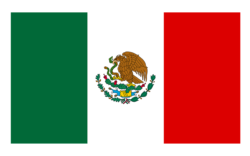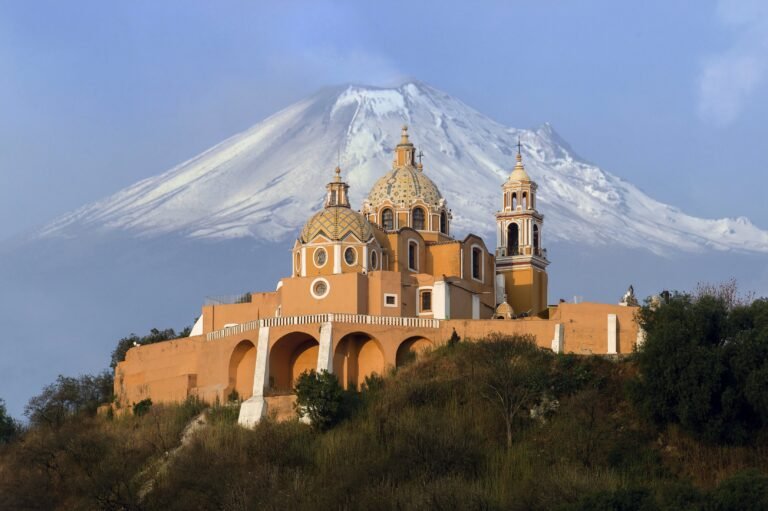When Was The Flag Of Mexico Adopted?
Have you ever wondered about the origins of the flag of Mexico? This article explores the fascinating history behind the adoption of this iconic flag. Delve into the details as we uncover fascinating facts and information about the flag of Mexico and its significance within Mexican culture. Discover the answer to the question, “When was the flag of Mexico adopted?” and gain a deeper understanding of this beloved symbol of national pride.
Background of the Flag of Mexico
The flag of Mexico is a bold and vibrant symbol of the country’s rich history and culture. Its design and colors hold deep meaning, and its evolution over time reflects the changing political landscape of Mexico. Understanding the background of the flag helps us appreciate its significance and the pride it evokes.
Design and Meaning
The Mexican flag consists of three vertical stripes of green, white, and red. The stripes are equal in size, with the green stripe on the hoist side, followed by the white stripe, and the red stripe on the fly side. In the center of the white stripe lies Mexico’s national coat of arms – an emblem that holds great symbolism for the Mexican people.
The green stripe represents hope and independence, reflecting Mexico’s aspirations as a nation. The white stripe signifies purity and unity, highlighting the unwavering commitment of the Mexican people to stand together. The red stripe represents the blood shed by the heroes who fought for Mexico’s freedom.
The central emblem on the flag, the national coat of arms, features an eagle perched on a cactus, devouring a serpent. This symbolizes the legendary founding of Tenochtitlan, now Mexico City, as instructed by the gods. The eagle, serpent, and cactus are significant elements of Mexican mythology, representing resilience, strength, and the triumph of good over evil.
Symbolism of the Colors
Each color on the Mexican flag carries deep symbolism. The green represents the independence movement led by Miguel Hidalgo in the early 19th century. It also represents the agricultural wealth of Mexico and the hope for a prosperous future.
The white color symbolizes the purity and unity of the Mexican people. It represents the desire for harmony and peace within the nation, transcending divisions and embracing all Mexicans.
The red color on the flag symbolizes the bravery and sacrifice of the heroes who fought for Mexican independence. It serves as a reminder of the bloodshed and valor that paved the way for a free and sovereign Mexico.
Evolution of the Flag
The flag of Mexico has evolved over time, reflecting the changing political landscape of the country. The current design we see today can be traced back to the early 19th century, but it has gone through several modifications since then.
Historical Context of the Flag’s Adoption
To fully appreciate the significance of the Mexican flag, we must delve into the historical context surrounding its adoption. The journey towards a national flag was shaped by pre-independence symbols, the influence of foreign flags, and the quest for a unified Mexican identity.
Pre-Independence Flags
Before the adoption of the current flag, Mexico had several flags that represented different factions during the struggle for independence. These flags varied in design and symbolism, often reflecting the ideals or leaders they represented.
Early National Symbols
In the early 19th century, as Mexico gained independence from Spain, efforts were made to establish a unified national identity. The need for a distinctive national flag became apparent, as a symbol to rally the people and signify Mexico’s sovereignty.
Influence of the French Flag
During the period of the French Intervention in Mexico, from 1862 to 1867, the design of the French flag influenced the Mexican flag’s appearance. This influence can be seen in the addition of the French-style eagle and the tricolor design.
Emperor Agustín de Iturbide’s Flag
After Mexico achieved independence in 1821, Agustín de Iturbide proclaimed himself emperor and adopted a different flag for the nation. The design consisted of three vertical stripes, in green, white, and red, with a crowned eagle perched on a nopal (cactus).
First Republic Flag
The flag used during the First Mexican Republic, from 1823 to 1864, featured three equal vertical stripes in green, white, and red, without a central emblem. This represented the transition from monarchy to a democratic republic, embracing the principles of liberty, equality, and fraternity.
Flag of the Republic of the Rio Grande
During the short-lived Republic of the Rio Grande, a breakaway state in northern Mexico, a different flag design was used. It featured three equal vertical stripes in red, white, and blue, with a star in the upper-left corner. This flag represented the aspirations of the region for independence.
Consolidation of the Mexican Flag
It was not until 1968 that the Mexican flag achieved its current design and configuration. The modern flag embodies the historical journey and consolidation of Mexico as an independent and unified nation.
Debate and Legislation
The path towards the adoption of the Mexican flag was not without its debates and discussions. Various proposals were put forth, and the final design and specifications were determined through legislative processes.
Early Proposals and Discussions
In the early 19th century, as Mexico sought to establish its national identity, different proposals for a national flag were debated. These proposals reflected the values and aspirations of different factions within Mexican society.
Creation of the State Rectangular Flag
In 1823, the Mexican Congress adopted a resolution to create a state rectangular flag, with the design consisting of three vertical stripes. This marked a significant step towards the standardization of the Mexican flag.
Recognition by the United States
The United States played a role in the official recognition of Mexico’s flag. In 1824, the Mexican flag was officially recognized by the United States as Mexico’s national flag, cementing its status as a recognized symbol of sovereignty.
Official Adoption of the Flag
The modern design of the Mexican flag, with its tricolor stripes and national coat of arms, was officially adopted on September 16, 1968. This date holds great significance as it marks the anniversary of Mexico’s independence.
Adoption of the National Flag of Mexico
The adoption of the Mexican flag went through several stages, each reflecting the changing political landscape and the aspirations of the Mexican people. Let’s explore the different designs and modifications that the flag underwent during its journey.
1821: The First National Flag
The first national flag of Mexico, adopted in 1821, featured a vertical tricolor design with the colors of green, white, and red. It served as a symbol of Mexico’s newly gained independence from Spain.
1823: The Republican Flag
In 1823, Mexico adopted a flag without the central emblem – the national coat of arms. This design represented the transition from monarchy to a republican form of government, emphasizing the principles of democracy and equality.
1824: The Federal Flag
The adoption of the Federal Constitution of the United Mexican States in 1824 introduced a new flag design. This design featured the tricolor stripes and the national coat of arms in the center, representing the unity and federal nature of the Mexican states.
1916: Standardization of the Flag
In 1916, the Mexican government standardized the design of the national flag. The proportions of the flag were set, specifying the width and height of each stripe and the dimensions of the national coat of arms.
1968: Modern Design Modifications
The flag we see today, with its modern design modifications, was officially adopted in 1968. The changes included a more detailed and stylized representation of the national coat of arms, emphasizing key elements of Mexican heritage and mythology.
Significance of the Flag in Mexican Culture
The Mexican flag holds immense significance and serves as a cherished symbol in Mexican culture. It is woven into the fabric of national identity, celebrated during important holidays and events, and displayed with pride in various locations.
Patriotic Symbol
The flag stands as a powerful patriotic symbol, evoking emotions of pride, loyalty, and unity among the Mexican people. It represents the struggles, sacrifices, and triumphs that have shaped Mexico’s history.
National Holidays and Celebrations
During national holidays and celebrations, such as Independence Day and Constitution Day, the flag takes center stage. Mexicans decorate their homes, streets, and public spaces with flags, exhibiting their love for their country.
Common Display Locations
The Mexican flag can be found flying proudly in various locations across the country. It is prominently displayed in government buildings, schools, public squares, and private residences, symbolizing the presence of Mexico’s identity and values.
Historical and Cultural Events
From cultural festivals to political rallies, the Mexican flag plays a significant role in shaping the atmosphere of historical and cultural events. It provides a focal point for celebrations and a unifying symbol for participants.
International Representation
Beyond Mexico’s borders, the flag serves as a universal recognition of Mexican identity and culture. It represents Mexico during international events, conferences, and sporting competitions, becoming a symbol of Mexican pride on a global scale.
Controversies and Misuses of the Mexican Flag
Despite its revered status, the Mexican flag has unfortunately been subject to controversies and misuse. Improper display, commercialization, flag desecration, and political manipulation have tarnished the sanctity of the flag.
Improper Use and Display
There have been instances where the Mexican flag has been displayed improperly or disrespectfully. Failure to fly the flag with proper decorum, such as improper folding techniques or neglectful maintenance, can be seen as a sign of disrespect.
Commercialization and Appropriation
The commodification of the Mexican flag for commercial gain has raised concerns among some. Its use in marketing campaigns and the production of merchandise can sometimes undermine the flag’s significance and reduce it to a mere branding tool.
Flag Desecration
Acts of flag desecration, such as burning or defacing the Mexican flag, have sparked controversy and stirred public outrage. These actions are seen as disrespectful and a direct offense to the values and sacrifices the flag represents.
Political Manipulation
Like flags of other nations, the Mexican flag has at times been used as a political tool, manipulated to advance certain agendas or provoke divisions. Such acts exploit the emotional connection people have with the flag and can lead to polarization.
Reverence and Respect for the Flag
To protect the sanctity of the Mexican flag, there are laws and protocols in place that govern its treatment and use. These measures aim to ensure that the flag is always treated with reverence and respect.
Legal Protection
Mexican law provides legal protection for the flag, ensuring its proper use and preventing its commercial exploitation or desecration. Violation of these laws can result in penalties and legal consequences.
Flag Etiquette and Protocol
Flag etiquette and protocol dictate how the flag should be displayed, handled, and saluted. Mexicans are encouraged to familiarize themselves with these guidelines and show the utmost respect when dealing with the flag.
Flag Retirement Ceremonies
When a Mexican flag becomes worn or tattered, it is custom to retire it through a ceremonial burning. This respectful act acknowledges the flag’s service and ensures that it is disposed of in a dignified manner.
National Anthem and Salute
Accompanying the flag’s display, the Mexican national anthem is performed or sung with pride. The flag salute, known as the “Saldó a la Bandera,” is also performed during ceremonies or events, where individuals pledge their allegiance to the flag and their nation.
The Flag of Mexico Around the World
As Mexico’s cultural influence expands globally, the presence of the Mexican flag can be seen in various contexts outside of Mexico’s borders.
Mexican Diaspora
Mexicans living abroad, often referred to as the Mexican diaspora, proudly display the Mexican flag as a cultural representation and a reminder of their homeland. It serves as a connection to their heritage and a symbol of unity within their communities.
Mexican Embassies and Consulates
Mexican embassies and consulates around the world display the flag prominently, representing Mexico’s presence internationally. The flag serves both as a symbol of Mexican identity and a reminder of the diplomatic relations between nations.
International Sporting Events
During international sporting events, such as the Olympics or the FIFA World Cup, Mexican athletes proudly wear the flag on their uniforms. The flag becomes synonymous with their representation of Mexico and sparks national pride among spectators.
Symbolic Representation
On a broader scale, the Mexican flag serves as a symbolic representation of Mexico’s culture, history, and values. It is recognized worldwide as a visual embodiment of Mexico’s identity and an emblem of Mexican pride.
Evolution of National Symbols in Mexico
The Mexican flag is not the only national symbol that holds significance in Mexico. The coat of arms and the national anthem also play pivotal roles in reflecting Mexican national identity and serving as symbols of unity and pride.
Coat of Arms
The national coat of arms, featured prominently on the Mexican flag, consists of an eagle perched on a cactus, devouring a serpent. It symbolizes the founding of Mexico City and signifies the resilience, strength, and triumph of good over evil.
National Anthem
The Mexican national anthem, “Himno Nacional Mexicano,” composed in 1853, serves as an expression of Mexican patriotism. Its lyrics pay tribute to Mexico’s beauty, history, heroes, and the bravery of its people. The anthem is often sung with great emotion and pride during official ceremonies and sporting events.
Conclusion
The flag of Mexico stands as an enduring symbol of the country’s history, culture, and identity. Its design, colors, and emblem hold deep meaning, representing Mexico’s struggle for independence, unity, and aspirations for a better future. The flag’s evolution, controversies, and reverence in Mexican culture all contribute to its continued significance as a cherished national emblem. As Mexicans proudly display and honor their flag, it serves as a source of unity, pride, and inspiration for generations to come.








